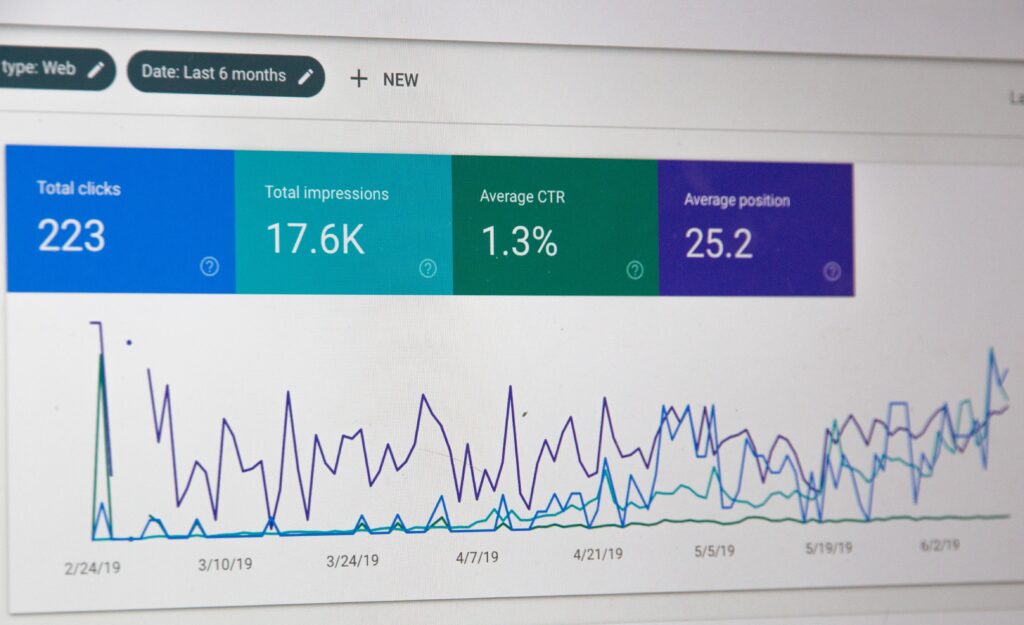
In this series of articles aimed at startups and small businesses, we provide essential information about key digital marketing topics. Today, we’re delving into the world of SEO with an overview of what it is and how it can benefit your business. SEO stands for Search Engine Optimization, and it plays a crucial role in helping your website climb the ranks of search engine results pages. Read on to discover the basics of SEO and how you can leverage it to build, grow, and scale your business effectively.

What is SEO?
SEO stands for Search Engine Optimization. It is the practice of improving a website’s visibility and ranking on search engine results pages (SERPs). In simple terms, SEO helps your website appear higher in search results when someone searches for related keywords or phrases. This increased visibility can lead to more organic website traffic and potential customers.
Understanding the concept of SEO
SEO is based on the idea that search engines like Google use complex algorithms to determine which websites are most relevant to a user’s search query. By optimizing your website’s content and structure, you can improve its chances of being ranked higher by search engines.
The importance of SEO for businesses
In today’s digital age, having a strong online presence is crucial for businesses of all sizes. With the vast number of websites competing for attention, it is essential to ensure that your website can be easily discovered by potential customers. SEO helps businesses improve their visibility, attract targeted organic traffic, and ultimately increase conversions and revenue.
How Search Engines Work
To understand how SEO works, it’s important to have a basic understanding of how search engines operate. Search engines like Google use complex algorithms to crawl and index websites, and then rank them based on various factors.
Crawling and indexing
Search engines use web crawlers, also known as spiders, to systematically browse and analyze web pages. These crawlers follow links from one page to another, collecting data about the content and structure of each page. This data is then stored in a massive index, which the search engine uses to display relevant results to users.
Ranking algorithms
Search engines use ranking algorithms to determine the order in which websites appear on search engine results pages. These algorithms take into account various factors such as the relevance and quality of the website’s content, the number and quality of links pointing to the website, and the overall user experience provided by the website.

Types of SEO
There are three main types of SEO: on-page SEO, off-page SEO, and technical SEO. Each type focuses on different aspects of website optimization.
On-page SEO
On-page SEO involves optimizing individual web pages to improve their visibility in search results. It includes practices such as keyword research and optimization, creating high-quality content, and optimizing meta tags and headers.
Off-page SEO
Off-page SEO refers to the actions taken outside of your own website to improve its visibility and ranking. This primarily involves building high-quality backlinks from other reputable websites, as well as engaging with social media platforms to increase your website’s exposure.
Technical SEO
Technical SEO focuses on optimizing the technical aspects of a website to improve its visibility and user experience. It includes practices such as optimizing website speed, ensuring mobile responsiveness, and structuring URLs in a way that is easily understood by search engines.
On-Page SEO Best Practices
To effectively optimize your web pages, it is important to follow on-page SEO best practices. These practices can help search engines understand your website’s content and improve its visibility in search results.
Keyword research and optimization
Keyword research is the process of identifying the keywords and phrases that are relevant to your website and have a high search volume. By strategically using these keywords in your content, meta tags, and headers, you can improve your website’s chances of ranking higher for those keywords.
Content creation and optimization
Creating high-quality, informative, and engaging content is a critical aspect of on-page SEO. Search engines prioritize websites that provide valuable content to users. By developing well-structured and optimized content, you can increase your website’s visibility and attract more organic traffic.
Meta tags and headers optimization
Meta tags and headers provide important information about your web page to search engines. Optimizing these elements with relevant keywords and descriptive language can help search engines understand the content and context of your web pages better.

Off-Page SEO Techniques
While on-page SEO focuses on optimizing your website’s content and structure, off-page SEO involves actions taken outside of your website to improve its visibility and reputation.
Link building strategies
Link building is the process of getting other websites to link back to your website. These backlinks act as votes of confidence, signaling to search engines that your website is trustworthy and has valuable content. Implementing effective link building strategies can significantly improve your website’s visibility and ranking.
Social media engagement
Engaging with social media platforms is an essential aspect of off-page SEO. By actively participating in relevant social media communities and promoting your content, you can increase your website’s exposure, attract more visitors, and potentially gain backlinks.
Guest blogging
Guest blogging involves writing and publishing articles on other websites in your industry. This not only helps you share your expertise with a wider audience but also allows you to include backlinks to your website. Guest blogging can strengthen your website’s authority, increase its visibility, and attract more organic traffic.
Technical SEO Considerations
Technical SEO focuses on optimizing the technical aspects of your website to improve its visibility and user experience.
Website speed optimization
Website speed is a crucial factor in both user experience and search engine rankings. Slow-loading websites can lead to higher bounce rates and lower search engine rankings. Optimizing your website’s speed by reducing file sizes, enabling browser caching, and minimizing server response time can significantly improve your website’s performance.
Mobile responsiveness
With the increasing use of mobile devices to browse the internet, it is essential to ensure that your website is mobile-friendly. Mobile responsiveness refers to how well your website adapts to different screen sizes and resolutions. Search engines prioritize mobile-friendly websites, so optimizing your website for mobile devices can improve its visibility in search results.
URL structure
A clear and logical URL structure helps search engines understand the content and organization of your website. Using descriptive keywords in your URLs and separating different sections with slashes can improve your website’s visibility and make it more user-friendly.
Local SEO
Local SEO is a subset of SEO that focuses on optimizing your website to appear in location-based searches. It is especially important for businesses that target a specific geographic area.
Understanding local search intent
Local search intent refers to the specific queries made by users looking for products or services within their immediate vicinity. Understanding the search intent of local users and optimizing your website’s content accordingly can help you attract targeted local traffic and increase your chances of generating leads or sales.
Creating local business listings
Creating and optimizing local business listings on platforms such as Google My Business and Bing Places for Business is crucial for local SEO. These listings provide valuable information about your business to search engines and potential customers, including your address, phone number, and operating hours.
Getting customer reviews
Online customer reviews can significantly impact a business’s reputation and visibility in local search results. Encouraging satisfied customers to leave positive reviews and responding to any negative reviews can help you build a strong online reputation and improve your website’s local SEO performance.
SEO Analytics and Reporting
Tracking and analyzing key metrics is essential for understanding the success of your SEO efforts and making data-driven decisions.
Tracking website traffic and rankings
Using tools such as Google Analytics and Google Search Console, you can monitor your website’s traffic and rankings on search engine results pages. By tracking these metrics over time, you can identify trends, measure the impact of your SEO strategies, and make adjustments as needed.
Analyzing keyword performance
Analyzing the performance of the keywords you are targeting is crucial for determining their effectiveness. Tools such as SEMrush and Moz allow you to track keyword rankings, search volumes, and competition levels. By analyzing this data, you can identify opportunities for improvement and optimize your keyword targeting.
Using tools for SEO analysis
Various tools are available to help with SEO analysis and optimization. These tools can provide insights into factors such as website speed, backlink profiles, and keyword rankings. By utilizing these tools, you can identify areas for improvement and make data-driven decisions to enhance your SEO strategy.
Common SEO Mistakes to Avoid
While implementing SEO strategies is important, avoiding common pitfalls can help ensure the effectiveness of your efforts.
Keyword stuffing
Keyword stuffing is the practice of unnaturally and excessively using keywords in an attempt to manipulate search engine rankings. This practice is highly discouraged by search engines and can result in penalties. Instead, focus on creating high-quality content that incorporates relevant keywords in a natural and meaningful way.
Duplicate content
Having duplicate content across multiple web pages can confuse search engines and dilute your website’s visibility. It is important to ensure that each page on your website provides unique and valuable content. If you have similar content on different pages, consider consolidating or reworking it to avoid duplication.
Ignoring mobile optimization
With the increasing use of mobile devices for internet browsing, ignoring mobile optimization can significantly impact your website’s visibility and user experience. Ensure that your website is responsive, loads quickly on mobile devices, and provides a seamless user experience across different screen sizes.
Conclusion
In conclusion, SEO is a crucial aspect of digital marketing that can help businesses improve their online visibility, attract targeted organic traffic, and increase conversions. By understanding the concepts, types, and best practices of SEO, businesses can effectively optimize their websites and stay competitive in today’s digital landscape. Ongoing SEO efforts, including monitoring analytics, avoiding common mistakes, and adapting to algorithm changes, are vital for maintaining and improving search engine rankings. With a solid SEO strategy in place, businesses can ensure that their online presence thrives and reaches the right audience.
RELATED POSTS
View all

